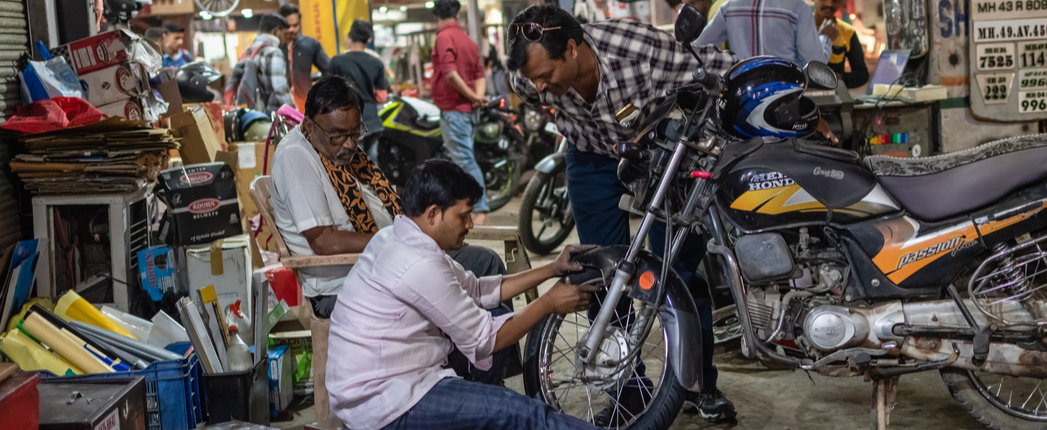
Lithium greases made a small comeback in 2020 in Asia’s two largest grease markets, according to the latest survey by the United States-based National Lubricating Grease Institute. The portion of products made with conventional or complex lithium soap thickeners rose from 68% to 70% in China and from 82% to 85% in India.
In both countries the portion of greases made with lithium thickeners had been declining for several years due to rising prices and competition for the chemical from other industries such as electric vehicles.
The number of participating companies reporting sales in Asian countries fell last year, preventing comparisons of overall volume trends with 2019, but the survey’s organizer said it was clear that production within the region fell. The COVID-19 pandemic was blamed for decreases in output and may have caused a drop in the number of survey participants, too.
“… possibly due to the pandemic, a number of companies did not provide data for 2020,” Chuck Coe wrote in the cover letter to the survey report. Chuck Coe wrote in the cover letter to the survey report. Coe is president of Grease Technology Solutions, the independent research and consulting firm that conducts the survey on behalf of NLGI. “India reported a major decrease of over 15% [in production], about 4% of which is due to participant drop out, while Japan declined by over 12% from 2019.” Coe noted that Southeast Asia and China recorded smaller decreases of 4% and 2%, respectively.
Worldwide the survey did have enough participants to allow a year-to-year comparison, which showed that production fell 9% to 2.5 billion pounds. “Clearly, the COVID-19 pandemic had a significant impact on worldwide grease production,” Coe said.
Seventy-three Chinese producers responded to the 2020 survey, down from 81 in 2019. The participants for this latest survey produced a total of 934.1 million pounds of grease, accounting for 38% of the global count. Europe and North America combined to account for 34%.
Lithium has long been the dominant choice of thickener types worldwide, but its use has slowly decreased in recent years as costs jumped. In China, the portion of greases thickened with conventional or complex lithium soaps has fallen from 80% since 2016. Polyurea greases also gained ground, accounting for 6% of production in the country last year, up from 5% in 2019.
Calcium soap thickeners lost ground, making up 19% of all thickener types in China in 2020 after rising from 12% in 2017.
India and the Indian subcontinent NLGI sent its survey to 31 companies and received responses from 16 – one less than in 2019 – that reported combined production of 190 million pounds of grease in 2020. Aluminum soap thickeners saw the biggest drop-off, falling from 2.6% in 2019 to 0.4% last year.
For Japan the survey received responses from 16 companies reporting combined production of 151.7 million pounds. The portion of products thickened with either lithium variety rose from 60% to 61%. The country remains by far the global leader in production of polyurea greases, but they accounted for 26% of domestic production in 2020, down from 28% in 2019.
In the Pacific and Southeast Asia region 13 of 19 surveyed companies responded, and they reported combined production of 161.5 million pounds. In this region use of lithium soap thickeners continued to decline, from 74% in 2019 to 72% last year. Calcium soap thickeners took up the slack, rising from 14% to 16%.
The survey also compiled grease production data by base oil type. “Although not all respondents provided base oil data, approximately 91% of participants did report
production by base oil type,” Coe said in the introductory letter. “The base oil data shows a continuing trend toward increased use of synthetic, semi-synthetic and bio-based base fluids.”
Base fluid type was recorded for all 934 million pounds of grease production reported in China. Of that, 89% was made with conventional fluids and 11% with synthetic or semi-synthetic. Of the 104.3 million pounds of grease for which base fluid type was reported in India and the India subcontinent, 98% was made with conventional fluids and 2% with synthetic or semi-synthetic.
In the Pacific and Southeast Asia, of the 157.4 million pounds of grease for which base oil fluid was reported, 95% was made with conventional fluid, and 5% with synthetic or semi-synthetic. In Japan base fluid type was reported only for 12.6 million tons or 8% of the country’s 2020 production total. The base fluid type was divided evenly between conventional base fluids and synthetics.
The full 30-page report of 2020 grease production includes prior year data going back to 2017 and is available to download at the NLGI website. NLGI member companies can obtain a free copy, and nonmembers may purchase the report, which contains data categorized by geographic region, thickener type, base oil type and year.